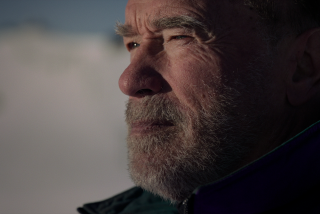Allan R. Sandage dies at 84; cosmologist focused on the age of the universe
- Share via
Astronomer Allan R. Sandage of Pasadena’s Carnegie Observatories, one of the most prominent cosmologists of the 20th century who spent the better part of his lifetime trying to determine the precise age of the universe, died Saturday at his home in San Gabriel. He was 84 and had been suffering from pancreatic cancer.
Beginning in the early 1950s, when he served as the illustrious Edwin Hubble’s observing assistant at the Mt. Wilson and Palomar observatories, Sandage single-mindedly sought the elusive Hubble constant, named after his mentor.
Hubble revolutionized astronomy by discovering that the universe is expanding, and the Hubble constant is a measure of how long that expansion has been going on. When Sandage began his work, the best estimates for the age of the universe were about 1.8 billion years. Today, work by NASA using the Hubble Space Telescope has shown that the Hubble constant is about 70 kilometers per second per megaparsec, which translates to an age of about 12 billion years.
Sandage, however, had been convinced for years that the true value was actually 55, which would put the age of the universe closer to 15 billion years, and he remained convinced of that at the time of his death. His disputes with the scientific community over the age of the universe were often so heated that they were sometimes known as the “Hubble Wars.”
Sandage regularly noted that the community at large had, until recently, used much larger numbers than 70 and had gradually been coming closer to his own preferred value. His assumption up until his death was that eventually everyone else would agree with him.
In his 1991 book “Lonely Hearts of the Cosmos,” in which Sandage was a central character, science journalist Dennis Overbye noted that he was a man of very strong opinions: “You weren’t anybody in astronomy if Sandage hadn’t stopped talking to you at one time or another.”
He had a number of other achievements.
During the 1950s, radio surveys of the sky by astronomers at Cambridge University found a number of compact radio sources rather than the broad sources previously observed. In 1960, Sandage and Thomas Matthews used the 200-inch Hale Telescope to identify one of those sources, a faint star-like object whose spectrum was found to be unlike that of any other star.
Other astronomers eventually showed that these quasi-stellar objects, or quasars, are not in our own galaxy, but are located at the farthest reaches of the universe. Quasars are the brightest and most distant objects in the universe.
Sandage continued his work on quasars and found a way to discover them by searching for objects that emit an excessive amount of ultraviolet or blue radiation, the so-called blue stellar objects, or BSOs. Most of these are not radio emitters, but can be classified as quasars because of their very large red shift, which places them very far away.
Sandage also led the first major survey of the distances of other galaxies from the Milky Way, which he used to create a three-dimensional map to explore galaxy distribution and the dynamics of the nearby universe.
Allan Rex Sandage was born June 18, 1926, in Iowa City, Iowa. His father was a business professor at Miami University of Ohio and, as a boy, Allan enjoyed watching the Ohio skies through a friend’s telescope. He was soon keeping a journal of sunspot activity during the daytime as well.
He enrolled at Miami, but was drafted into the Navy during World War II and served as an electronics specialist. At war’s end, he earned a degree in physics from the University of Illinois in 1948 and a doctorate from Caltech in 1953.
He joined the Carnegie Observatories while still a graduate student, assisting Hubble. When Hubble died in September 1953 after a heart attack, Sandage inherited his work on estimating the age of the universe.
“I came at exactly the right time,” he later said in an interview. “I was 26 years old, and all the monks and priests down here were ready to retire. So I overlapped enough that I got to know them all.”
His work was primarily observational rather than theoretical, and he was considered very old-school, continuing to use photographic plates rather than computers and shying away from voice mail and e-mails. He continued working until this August.
Sandage published more than 500 papers and received a number of awards, including the 1991 Crafoord Prize, the astronomer’s equivalent of the Nobel Prize.
He is survived by his wife, Mary, and two sons, David and John.




